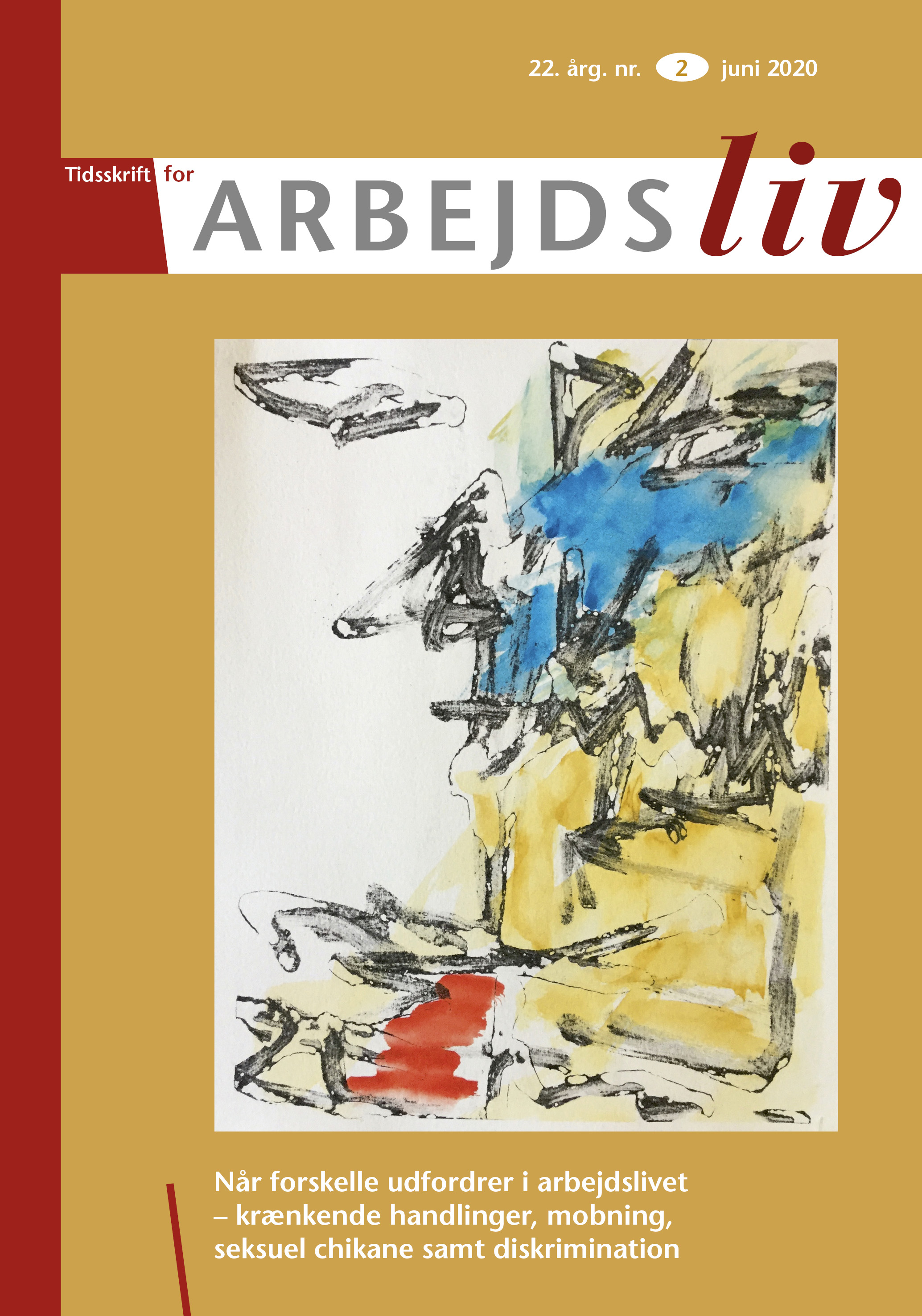The art of bullying – a study of workplace bullying as a cultural learning process
DOI:
https://doi.org/10.7146/tfa.v22i2.121520Abstract
The purpose of this article is to investigate what role workplace culture plays for the genesis of bullying. It investigates and offers a new approach on how bullying emerges in practice. With an ethnographic approach, this article presents a learning-oriented perspective onworkplace culture, it’s emergence and continuous change. This way of perceiving bullying complements the existing bullying research and challenges the triadic approach to bullying as a phenomenon. The article is based on the fi rst author’s ethnographical fi eldwork within the Danish National hospital. The article contributes to the research field by demonstrating the fundamental role of workplace culture for bullying’s origin, and also reveals new ways of understanding the ambiguous, dynamic ways in which the phenomenon of bullying emerges. Previous research has predominantly had an individually oriented approach, focusing on the roles of the bully, the victim and the bystanders. Thus, this cultural approach to workplace bullying has potentially far-reaching consequences for future strategies for handling and preventing bullying..
Downloads
Published
How to Cite
Issue
Section
License
Forfattere, der publicerer deres værker via dette tidsskrift, accepterer følgende vilkår:
- Forfattere bevarer deres ophavsret og giver tidsskriftet ret til første publicering, samtidigt med at værket ét år efter publiceringen er omfattet af en Creative Commons Attribution-licens, der giver andre ret til at dele værket med en anerkendelse af værkets forfatter og første publicering i nærværende tidsskrift.
- Forfattere kan indgå flere separate kontraktlige aftaler om ikke-eksklusiv distribution af tidsskriftets publicerede version af værket (f.eks. sende det til et institutionslager eller udgive det i en bog), med en anerkendelse af værkets første publicering i nærværende tidsskrift.
- Forfattere har ret til og opfordres til at publicere deres værker online (f.eks. i institutionslagre eller på deres websted) forud for og under manuskriptprocessen, da dette kan føre til produktive udvekslinger, samt tidligere og større citater fra publicerede værker (se The Effect of Open Access).





